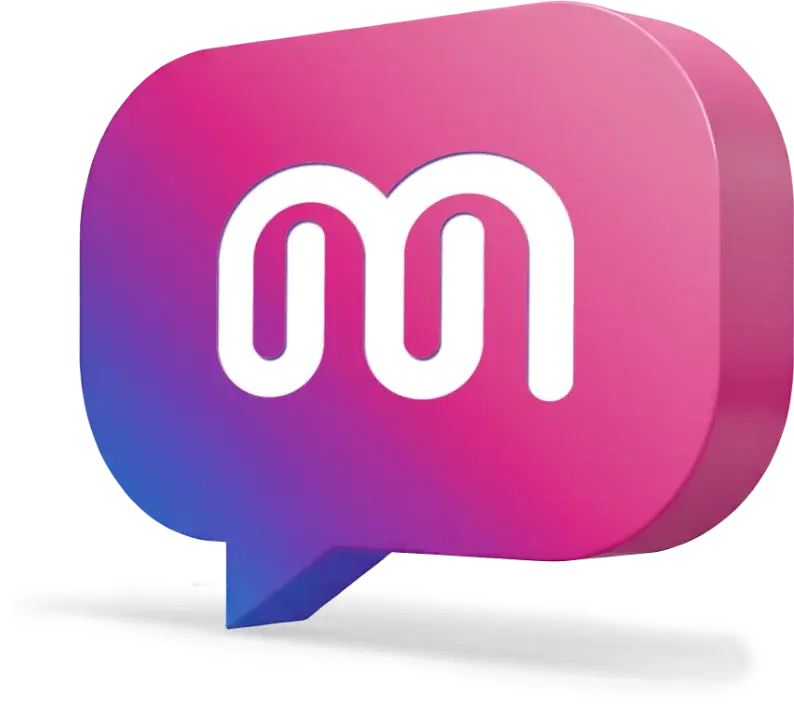SECTION
The 2025 Guide to HR Communication & High-Impact Metrics

Listen to this article:
HR communication is essential for fostering a great employee experience and cultivating a sense of belonging within your organization. Internal communication is imperative to business success, whether you're informing team members about new policies or company updates, gathering their feedback, or simply sharing light information.
HR professionals and leaders must turn internal communication into a strategic, data-driven process that sustains culture, engagement, and business performance.
With only 13% of employees reporting that leadership communicates effectively (Gallup), it's clear that mastering internal communication is a vital step toward improving organizational alignment and performance.
Read on to discover how you can transform your HR communication strategy and drive measurable results for your team and business.
👉 TLDR? This article outlines a strategic approach to HR internal communication, focusing on data-driven methods to boost employee engagement, trust, retention, and creativity. It covers communication flows, channels, and creating an effective strategy, including setting objectives, using technology like internal communication platforms, and tracking key metrics.
What is HR internal communication?
All human connections are built on communication. In the workplace, internal communication is the planned, measurable, two-way exchange of information between the organization and its people.
Beyond its primary purpose of informing and aligning everyone in the organization, HR internal communication is also crucial for individual and team performance. It also helps people build strong relationships and a sense of workplace belonging.
The HR department communicates essential company information or policy changes to team members. This is why internal communication in the workplace should be clear, consistent, and credible.
As leaders, you should always ask if your communication is strategic and achieves its intended purpose. According to Gallup, you should ask the following questions to determine the current path of your interbank communications:
- What are the primary reasons we communicate? and
- Are the primary reasons we communicate aligned with the reason we exist and the key strategies that follow?
Why is internal communication important to business?
Now that we understand that internal communication is more than just sharing information, let’s look at its business impact. HR communication is the bridge between leadership and employees and plays a vital role in employee engagement and experience, and organizational culture.
Here are the most important benefits of effective HR communication:
Increased engagement
Successful internal communication boosts employee engagement because it makes people feel a part of the business, connected to their coworkers, and empowered to have a voice.
When done right, communication can inspire team members to strive for excellence because they feel a strong sense of belonging and are dedicated to their organization.
Improved trust
Communication is integral to building trust and a psychologically safe work environment where people can voice their concerns, give feedback, and share ideas.
According to a UKG study, 63% of employees and executives worldwide think trust must be earned, with 74% of employees choosing to work for a company that is seen as trustworthy.
Increased retention
Engaged business units experience 24% less turnover, 21% higher profitability, and 41% lower absenteeism, as per Gallup’s 2024 meta-analysis.
Moreover, according to SHRM, replacing an employee costs 6× their salary. That means losing just one high-performing employee could cost your company €300,000+ in lost productivity, hiring, and onboarding expenses.
Increased creativity
Empathy skills are imperative to business success in the future, and HR communication is the right channel to show empathy towards your people. Thoughtful communication that considers everyone's needs and backgrounds can greatly improve creativity and productivity.
The four HR communication flows
In HR communication, there are four directions of information: downward, upward, horizontal, and diagonal. Each of them is suitable depending on the organization's size, character, and structure. Continue reading to find out the distinctive elements of each type of communication.
1. Downward communication
In downward communication, information is transmitted from top to bottom through the organization’s hierarchical structure.
This type of internal communication is usually common in large organizations, where this layering ensures strategic information gets to everyone in the company.
Monthly video town halls, weekly team huddles, and real-time micro-updates during crises are just a few examples of downward communication.
Although necessary, this type of communication shouldn't be the only one in your organization, as employees' voices must also be heard.

This is a community post in Mirro, representing downward communication
2. Upward communication
Unlike downward communication, upward communication happens when employees share feedback, complaints, or suggestions with upper management. Effective upward flow starts with psychological safety.
The most common examples of upward communication are anonymous pulse surveys, digital suggestion boxes, and CEO “Ask Me Anything” livestreams, which give employees multiple risk-free opportunities to flag issues.
Use upward communication to conduct engagement & satisfaction surveys with employee feedback software like Mirro. This way, you can measure employee happiness, motivation, and early signs of burnout to help HR address concerns before they escalate.

This is a question from a Mirro survey about employees' opinions about teambuilding
3. Horizontal communication
Horizontal communication occurs when people of the same level in an organization communicate with each other, usually to coordinate work across departments.
This type of communication makes it easier to solve problems and share information throughout various work groups.
HR’s role is to provide clear spaces, norms, and minimal control so information flows freely.
4. Diagonal communication
Finally, diagonal flow happens when people from different levels of the organization communicate with each other.
This is a conversation between employees who are not in the same chain of command but have different positions and roles. Diagonal communication, for example, is when you discuss recruiting a new team member with the head of marketing.
Diagonal communication is quick and efficient since a junior employee can communicate with a senior employee from a different department and find solutions to their problems quickly.
Communication channels & formats matrix
In this section, we’ll cover the different communication channels and formats matrix you can use to build an effective HR communication strategy.
💡 Pro tip: Use no more than three core channels per message; push low-stakes info to self-service bots and reserve synchronous airtime for inspiration.
How to build an HR communication strategy
Now, let’s get to the practical part. Follow these eight steps to build your HR communication strategy:
1. Define employee personas
Start with defining your employee personas by tenure, role, geographical location, digital savviness, gender, age, behaviors, or interests.
Employee segmentation helps HR teams adjust their communication strategy based on different employee groups and design custom messages.
By communicating tailored messages to particular groups, you can ensure that messages are relevant and employees are not inundated with unnecessary information.
2. Define the value proposition & story pillars
Then, think about linking every message to purpose, well-being, or growth. Clearly defining the value proposition and story pillars will help you align the communication strategy with the overall organizational strategy.
3. Set your communication objectives
Another key step is to set your communication objectives. You can only do so by clearly stating the benefits that your strategy promises to deliver.
As with the value proposition, communication objectives should support and contribute to business objectives. For example, suppose your organizational goal is to increase team performance. In that case, your primary communication objective should be to align and engage teams around clear, measurable goals while fostering an environment of continuous feedback and collaboration.
This means communicating expectations, providing timely feedback, celebrating achievements, or encouraging open communication.
4. Establish your communication channels
Choosing the proper communication channels is essential to maintain employee engagement and productivity levels. You should also establish who owns which channel and who signs off.
Email, intranets, collaboration tools, internal comm platforms, group chats, and internal business blogs are the most common communication methods used in the workplace nowadays. To maximize their impact, these tools should also be designed to engage frontline workers, ensuring that messages reach everyone, regardless of their location.
For example, with an internal communication platform like Mirro, you get collaboration, recognition, and social interaction tools in a single hub.
5. Define your content calendar
Then, establish the cadence, recurring themes, and responsible parties for each communication campaign within your organization. The more organized this part is, the more effective your strategy will be.
For example, the People Operations department should communicate legal changes, policies, and procedures. The leadership team should communicate organizational changes and strategy updates, and the internal communications team should transmit internal announcements, news, and events.
6. Determine the resources & tech stack required
When it comes to internal communication, technology can be an excellent resource and a tremendous help. Beyond traditional communication channels, like email and group chats, internal communication platforms can help HR and leadership facilitate meaningful, targeted communication while enhancing engagement and cultivating a sense of belonging.
For example, with Mirro, you can segment communication and ensure that the right people get the right information at the right time, reducing the risk of missed updates or disengagement.
Mirro provides a social hub where people can connect and be up-to-date with important company information, building an interactive workplace community that fosters belonging.
The platform also empowers people leaders by providing tools for public recognition, continuous feedback, and alignment on organizational goals, core features you’d expect from robust employee engagement software.

Mirro's community posts dashboard
🤝 If you want to discover how Mirro can transform your internal communication and build a thriving workplace community, book a demo today!
7. Establish your budget
Establish a budget and calculate the expenses related to the HR communication plan. A well-defined budget for internal communications aids in transforming company-wide communication into quantifiable business results.
8. Determine the HR metrics that drive value
Lastly, to determine how successful your HR communication initiatives are and make any required adjustments, it's also critical to measure them. You can only do so by choosing the right metrics to track and having the tools to help you. Read along to discover the key HR internal communication metrics.
HR metrics to track communication success
Here are the most used internal communication metrics that indicate if your communication strategy actually generates business growth:
1. Adoption & reach metrics
These metrics are used when introducing a new employee application to determine if people see the message or tool and acknowledge its value.
Key metrics:
- Email open rate: the percentage of recipients who opened your email.
- Email click-through rate: the percentage of recipients who clicked a link within your email.
- Unique intranet log-ins: the number of distinct users logging into the intranet over time.
- Video watch time/completion: measures how long viewers watch your video or the percentage that finish it.
- % workforce enrolled in chatbots or EX app: the percentage of the total workforce registered or active on communication bots or platforms.
2. Engagement metrics
These key performance indicators (KPIs) can all be used to measure employee engagement on the company intranet. They tell you how actively employees are leaning in.
Key metrics:
- Comments, reactions, shares: the number of employee interactions on communication posts (comments, likes, shares).
- Live-poll participation: the percentage of invited employees who participate in live polls or surveys.
- Attendance at virtual/in-person events: the number or percentage of employees attending virtual or in-person events.
- Peer-to-peer recognition posts sent: the number of public recognitions shared between employees on communication platforms.
3. Sentiment & advocacy metrics
Use these indicators to determine if people within your organization feel positive and aligned. You can measure happiness, motivation, and early signs of burnout through these metrics.
Key metrics:
- eNPS (employee Net Promoter Score): measures the likelihood that employees would recommend their workplace to others.
- Trust Index/psychological-safety score: it’s a survey-based score measuring employees’ trust in leadership and safety to speak up.
- Values-alignment index (survey item: “I see our values lived daily”): the percentage of employees who feel the company lives its stated values daily.
4. Feedback velocity metrics
Feedback velocity indicates how fast you are closing the loop on employee voices, and how fast you’re acting on people’s feedback.
Key metrics:
- Time to acknowledge survey results: the average time taken from completion to initial communication with employees.
- % of pulse-survey actions closed within 30 days: the percentage of feedback-driven action items resolved within 30 days.
- Suggestion-box response rate: the percentage of suggestions that receive a formal response.
5. Performance & development metrics
These KPIs determine if your communication strategy is supporting individual and team performance and growth.
Key metrics:
- % of employees receiving timely performance reviews: the proportion of employees who receive reviews on schedule.
- Quality of feedback score (post-review survey): a survey-based measure of how employees rate the usefulness of performance feedback received.
- Uptake of learning modules linked to comms: the percentage of employees completing training programs promoted through communication channels.
6. Turnover & absenteeism
Employees who are engaged at work are less likely to quit. Employee turnover rate and absenteeism are crucial internal communication KPIs to track.
Key metrics:
- Voluntary turnover rate: the percentage of employees who leave the organization voluntarily.
- Absenteeism/sick-day rate: the percentage of work time lost due to employee absence.
- Exit-survey communication “effectiveness” score: the average score on exit surveys assessing the effectiveness of internal communication.
7. Lagging culture indicators
Lastly, the following metrics pinpoint how healthy your organizational culture is and how your team is living the company values.
Key metrics:
- Glassdoor/Indeed rating delta: the change in average employer ratings on public review sites over time.
- Internal mobility rate (jobs filled internally): the percentage of job openings filled by internal candidates.
- Diversity progression metrics: track improvements in workforce diversity and inclusion.
💡 Pro Tip: Combine workforce insights dashboards from different tools like email analytics, survey tools, HRIS, and performance-management systems so leaders can drill from a high-level KPI (e.g., turnover) down to contributory communication drivers (e.g., low feedback-velocity scores).

Mirro's people insights dashboard
Extra: Trends shaping internal comms in 2025
Finally, you should consider the trends transforming how organizations connect with their people, make communication more effective, and boost employee engagement.
1. Hyper-personalised messaging via AI segmentation
Companies are now using AI to analyze data from systems like HR software and scheduling tools. This allows them to send messages that are tailored to each employee’s unique role, shift, and needs. For example, a safety update sent to a night-shift employee would be different from one sent to a remote developer, ensuring the right message reaches the right person.
2. Chatbots as first-line HR
With the help of AI-powered chatbots, HR departments can automate responses to the most common questions about policies, benefits, and procedures. This takes the load off HR teams, allowing them to focus on more complex issues like employee relations or strategic planning with direct business impact.
3. Hybrid-first asynchronous connectivity
More organizations are embracing asynchronous communication to support remote and hybrid work. By setting clear expectations for response times and summarizing key points in threads, teams can respect employees’ focus time and avoid disrupting their work. This ensures that colleagues in different time zones are just as included in conversations.
4. Inclusive, plain-language standard
Companies are increasingly adopting style guides emphasizing clear, simple language everyone can understand. These guides now include checks for readability, inclusivity, and accessibility to ensure that all communications are welcoming and easy to read. This move improves understanding and aligns with regulatory standards that hold organizations accountable for their language choices.
Key takeaways
Hopefully, this guide has equipped you with all the necessary tools to build an HR internal communication strategy that supports your business objectives.
The key takeaway? Clear, data-driven HR communication is now a core business capability. In 2025, the winners will personalize, visualize, automate, and constantly prove their messaging to business executives:
✅ Personalize: get the right information to the right individual at the right moment.
✅ Visualize: ditch text walls for easy-to-digest content like short and clear messages, videos, infographics, or dashboards.
✅ Automate: let AI chatbots and workflows handle routine communication tasks, like answering routine employee questions.
✅ Prove: track essential business metrics that link comms to behavior, cost, and revenue.
Start small, measure relentlessly, and iterate. Your people, your company’s leadership, and your balance sheet will thank you.






